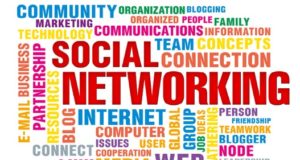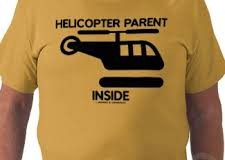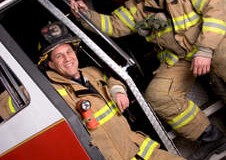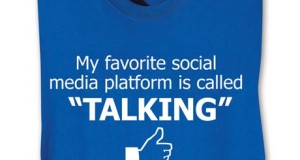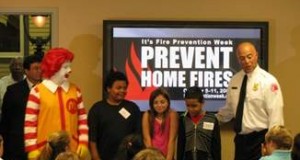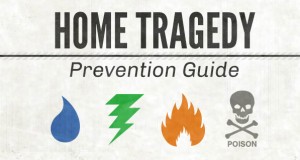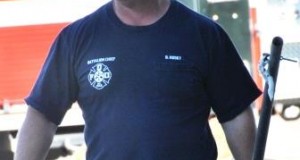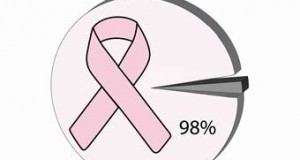By: Robert Avsec, Executive Fire Officer Networking is still the lifeblood of professional growth—but the circulatory system has evolved. It’s no longer just about collecting contacts or broadcasting updates. Today, networking is about building trust, curating relevance, and showing up consistently in the spaces where your voice matters. Here’s a refreshed action plan that goes beyond the basics. 🧭 Step ...
Read More »Tag Archives: social media
Digital Networking in 2025: More Than Just a Profile
By: Robert Avsec, Executive Fire Officer What does “digital networking” really mean today? I won’t pretend I’m a guru (though I did once survive a conference hotel breakfast buffet). What I do know, I’ve learned the same way I’ve gained most of my professional insight: reading, listening, trying, failing, and trying again. Repeat. Here’s what I’ve picked up—so you can ...
Read More »Reducing Organizational Risk in Your Fire and EMS Department
Firefighters and officers behaving badly. There are probably hundreds of causative factors at work, and while I'm not a trained sociologist by trade, I'm going to discuss a couple that really stand out in my mind: the use of social media and "helicopter parenting".
Read More »Storms, Public Safety, and Social Media
Social media tools such as Facebook, Twitter, Instagram, Pintrest and others have become THE way that people share information and expect to get information before, during, and after a natural or man-made disaster. I truly believe that and I also believe this: any public safety agency that doesn’t understand and fully embrace my previous statement is going to have a “rough row to how” during and after their next “big one.”
Read More »Firefighter Recruitment for Today
I’m seeing more postings on social media platforms, e.g., Facebook, Instagram, Twitter, LinkedIn, promoting social media infographicfirefighter employment opportunities in various locations around the USA and Canada. That’s a good thing, for sure, because if people don’t even know about the opportunities that are out there…but I don’t think that using social media to promote job announcements is any kind of “silver bullet” for fire service organizations looking to attract quality people to their “tribe.”
Read More »Wireless Devices in the Fire Station
When a firefighter or officer reports for duty at the beginning of their shift they are no longer on “their time.” They are now on the time of whoever is paying their salary. Time during their shift spent on work or activity that’s not directly linked to the job they’ve been hired for is…fraud.
Read More »Let’s Use Social Media to Promote Successes!
Fire departments should make greater use of social media to promote the success of fire and life safety education efforts such as when the residents of a home fire safely escape because they had working smoke detectors and a Home Fire Escape Plan that they had practiced.
Read More »Fire + No Working Smoke Alarm in Your Home = You’ll Die
It’s time we in the fire service quit being so polite to people about the deadly threat that fire poses to them, their families, and their communities. It’s time to stop “suggesting” that it’s a good idea to have a working smoke detector on every level of their home. Time to stop “making excuses” for the dead following a preventable fire where no working smoke detectors were present. And it’s time to stop making excuses for parents who manage to get out of a burning home, but their children do not because the parents never had or practiced a Home Fire Escape Plan with their children.
Read More »The Multi-Hazard Fire Department
The fire service needs to market its service as an insurance company does. The fire service provides services to its community that one never wants to call on, like insurance, but can't afford to be without when needed, also like insurance. This is not marketed enough. How many of people live without several insurance policies, e.g., life, health, auto, etc.? None. Yet fire departments in communities across the country are facing dire straits because of lack of citizen support in the voting booth or at fundraising time.
Read More »Why Don’t We Tell Them?
In the absence of factual information, most people will believe whatever they hear or will Social media mind mapmake up their own version of reality based upon their past experiences. In today’s “informational overload” world there are more than a few ways for people in a community to know what the men and women of their fire and EMS department are “up to”, both good and bad. Successful departments are those who've embraced social media in a proactive way to engage their communities in two-way communication.
Read More » Fire & EMS Leader Pro The job of old firefighters is to teach young firefighters how to become old firefighters!
Fire & EMS Leader Pro The job of old firefighters is to teach young firefighters how to become old firefighters!
